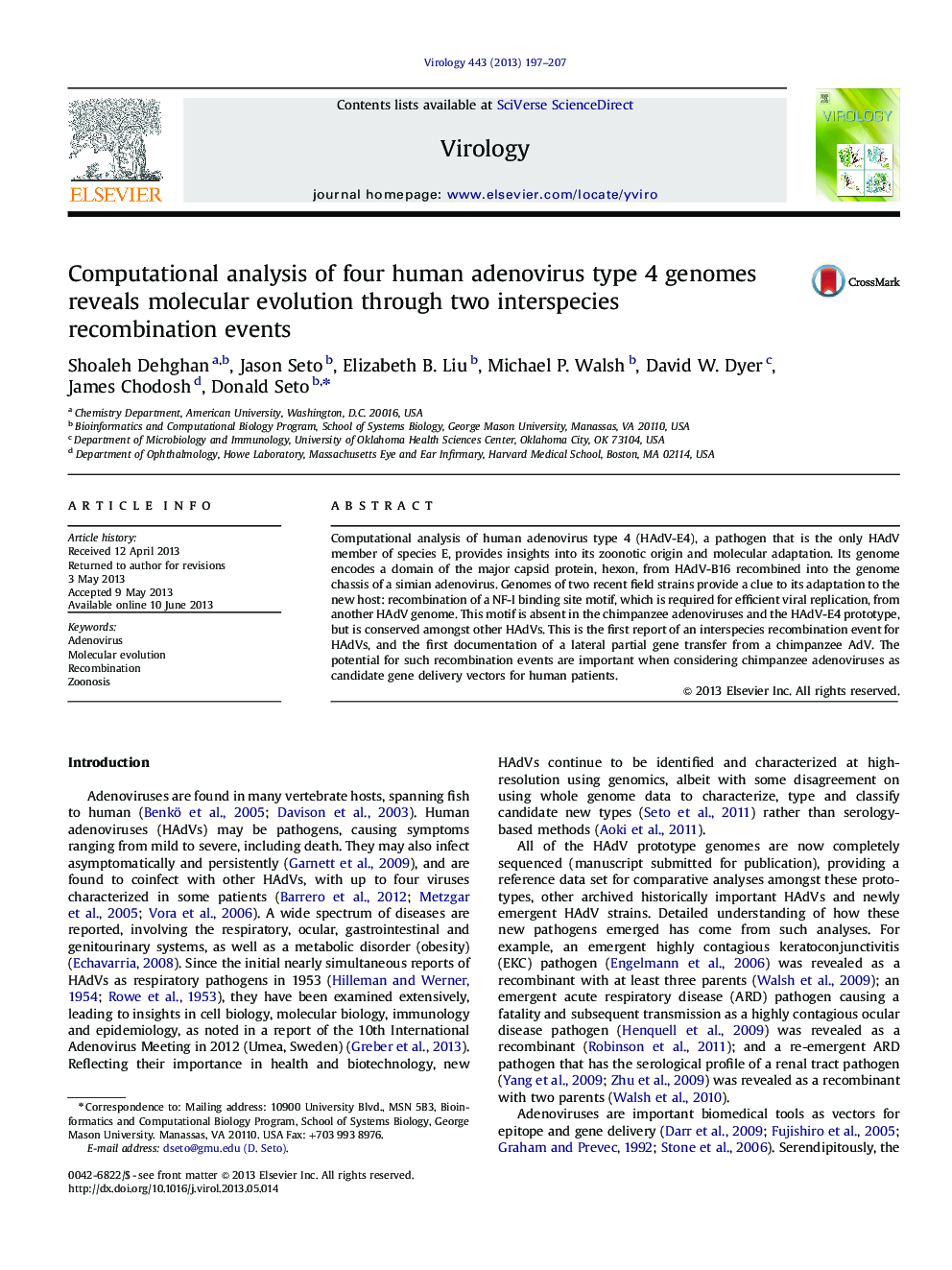| Article ID | Journal | Published Year | Pages | File Type |
|---|---|---|---|---|
| 6140929 | Virology | 2013 | 11 Pages |
Abstract
Computational analysis of human adenovirus type 4 (HAdV-E4), a pathogen that is the only HAdV member of species E, provides insights into its zoonotic origin and molecular adaptation. Its genome encodes a domain of the major capsid protein, hexon, from HAdV-B16 recombined into the genome chassis of a simian adenovirus. Genomes of two recent field strains provide a clue to its adaptation to the new host: recombination of a NF-I binding site motif, which is required for efficient viral replication, from another HAdV genome. This motif is absent in the chimpanzee adenoviruses and the HAdV-E4 prototype, but is conserved amongst other HAdVs. This is the first report of an interspecies recombination event for HAdVs, and the first documentation of a lateral partial gene transfer from a chimpanzee AdV. The potential for such recombination events are important when considering chimpanzee adenoviruses as candidate gene delivery vectors for human patients.
Related Topics
Life Sciences
Immunology and Microbiology
Virology
Authors
Shoaleh Dehghan, Jason Seto, Elizabeth B. Liu, Michael P. Walsh, David W. Dyer, James Chodosh, Donald Seto,
